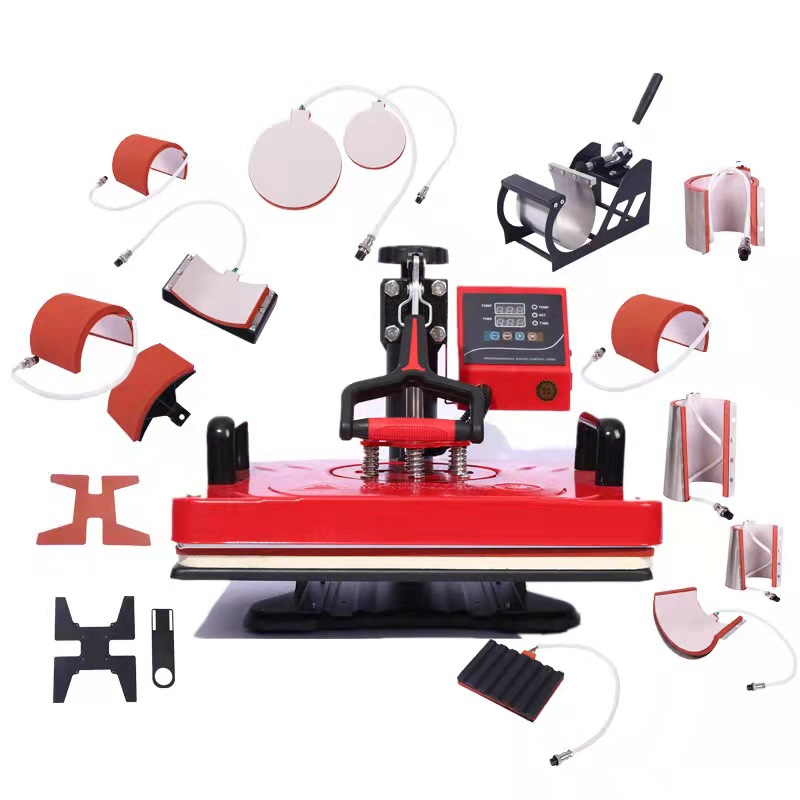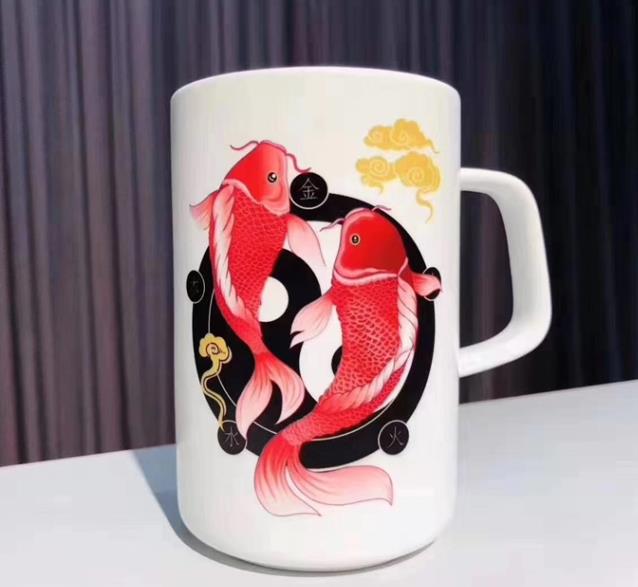HOW TO USE A HEAT PRESS MACHINE
HOW TO USE A HEAT PRESS MACHINE: STEP-BY-STEP INSTRUCTIONS [SHIRT, HAT, MUG]
There’s a near infinite variety of t-shirt designs these days, to say nothing of hats and coffee mugs. Ever wonder why?
It’s because you only have to buy a heat press machine to start churning out your own designs. It’s an awesome gig for those who are always full of ideas, or anyone who wants to start a new business or indulge in a new hobby.
But first, let’s find out how to use a heat press in 8 steps.
1. CHOOSE YOUR PRESS
The first step you need to take in your journey is finding the right press for you. If you’re starting a t-shirt business, it’s best to do a thorough investigation into your options. Similarly, you might want to make prints on a wider range of products, and in this case a multifunctional machine may prove invaluable.
The most important distinction, however, is between home presses and professional ones. The former is mostly made with private use in mind, but you can certainly use it for a business in its budding stages. If you are already handling bulk orders or plan to get to mass production, then a professional press is a better choice. It offers more settings for pressure and temperature and comes with larger platens.
2. CHOOSE YOUR MATERIAL
Print on cotton, lycra, nylon, polyester, and spandex. These materials are robust enough to withstand heat pressing, while you should consult the label for others.
It’s a good idea to pre-wash your garment, especially if it’s new. Some wrinkles might appear after that first wash and they can affect the design. If you do this before pressing, you will be able to avoid such issues.
3. CHOOSE YOUR DESIGN
This is the fun part of the process! Essentially any image that can be printed can also be pressed onto a garment. If you really want your business to take off, though, you need something original that will wake people’s interest.
4. PRINT YOUR DESIGN
An essential part of the heat pressing process is the transfer paper. This is a sheet with added wax and pigment that your design is initially printed on. It is placed over your garment in the press. There are different kinds of transfers, depending on the type of your printer and the color of your material. Here are some of the most common ones.
Inkjet transfers: If you have an inkjet printer, make sure to get the appropriate paper. An important thing to note is that inkjet printers don’t print white. Whatever part of your design is white will be shown as the color of the garment when heat pressed. You can work around this by choosing an off-white color (which can be printed) or using a white garment for pressing.
Laser printer transfers: As mentioned, there are different types of paper for different printers and they don’t work interchangeably, so be sure to pick the right one. Laser printer paper is considered to yield somewhat worse results than inkjet paper.
Sublimation transfers: This paper works with sublimation printers and special ink, so it is a more expensive option. The ink here turns into a gaseous state that penetrates the fabric, dying it permanently. It only works with polyester materials, however.
Ready-made transfers: There is also the option of getting pre-printed images that you put in the heat press without doing any printing yourself. You can even use your heat press to attach embroidered designs that have heat-sensitive adhesives on the back.
When working with transfer paper, you have to be mindful of several things. A basic one is that you should print on the correct side. This seems obvious, but it’s easy to get wrong.
Also, make sure to print a mirror version of the image you get on your computer screen. This will be reversed again in the press, so you will end up with exactly the design you wanted. It’s generally a good idea to test-print your design on an ordinary sheet of paper, just to spot if there are any mistakes – you don’t want to waste transfer paper for this.
Designs printed on transfer paper, particularly with inkjet printers, are held in place with a coating film. It covers the whole sheet, not just the design, and has a whitish hue. When you heat press the design, this film is also transferred to the material, which can leave fine traces around your image. Before pressing, you should trim the paper around the design as closely as possible if you want to avoid this.
5. PREPARE THE HEAT PRESS
Whichever heat press machine you’re using, it’s easy to learn how to use it. With any heat press machine, you can set your desired temperature and pressure and there’s also a timer. The press should be open when it’s being prepared.
Once you’ve turned your heat press on, set your temperature. You do this by turning the thermostat knob clockwise (or using the arrow buttons on some presses) until you’ve reached your desired heat setting. This will activate the heating light. Once the light is off, you’ll know that it has reached the temperature you want. You can turn the knob back at this point, but the light will keep going on and off to maintain the heat.
There isn’t one fixed temperature that you use for all pressing. The packaging of your transfer paper will tell you how to set it. This will usually be around 350-375°F, so don’t worry if it seems high – it should be for the design to stick properly. You can always find an old shirt to test the press on.
Next, set the pressure. Turn the pressure knob until you’ve reached the setting you want. Thicker materials usually require more pressure, while thinner ones don’t need it.
You should aim for medium to high pressure in all cases. It’s best to experiment a bit, however, until you’ve found the level that you think gives the best results. On some presses, a lower pressure setting makes it more difficult to lock down the handle.
6. PLACE YOUR GARMENT IN THE PRESS
It’s essential that the material is straightened when placed inside the press. Any folds will lead to a bad print. You can use the press to preheat the garment for 5 to 10 seconds to remove creases.
It’s also a good idea to stretch the shirt when you place it in the press. This way, the print will contract slightly when you’re finished, making it less likely to crack later.

Take care that the side of the garment where you want to be printed is facing up. The t-shirt tag should be aligned to the back of the press. This will help place the print correctly. There are presses that also project a laser grid onto your garment, making it much easier to align your design.
Your printed transfer should be placed face-down on the garment, while embroidered designs should be placed adhesive side-down. You can place a towel or a piece of thin cotton fabric on top of your transfer as protection, although you don’t need to do this if your press has a protective silicone pad.
7. TRANSFER THE DESIGN
Once you’ve correctly placed the garment and the print into the press, you can bring the handle down. It should lock so that you don’t have to physically press the top. Set the timer based on your transfer paper instructions, usually between 10 seconds and 1 minute.
Once the time has passed, open the press and take out the shirt. Peel off the transfer paper while it’s still hot. Hopefully, you’ll now see your design successfully transferred onto your garment.
You can repeat the process now for new shirts if you’re making more of them. If you want to add a print to the other side of the shirt you’ve already printed on, make sure to put a cardboard inside it first. Use less pressure this time around to avoid reheating the first design.
8. CARE FOR YOUR PRINT
You should leave your shirt to rest for at least 24 hours before washing it. This helps the print to set in. When you do wash it, turn it inside out so that there isn’t any friction. Don’t use detergents that are too strong, as they can affect the print. Avoid tumble dryers in favor of air-drying.
HEAT PRESSING HATS
Now that you know how to heat press a shirt, you’ll see that the same principles largely apply to hats. You can treat them by using a flat press or a special hat press, which makes it much easier.
You can also use transfer paper here, but it’s easiest to add designs to caps with heat transfer vinyl. This material is available in many colors and patterns, so you can find the ones you like the most and cut out the shapes you want.
Once you have a design you like, use heat tape to attach it to the cap. If you’re using a flat press, you need to hold the cap from the inside with an oven mitt and press it against the heated platen. Since the front of the cap is curved, it’s best to press the middle first and then the sides. You will have to make sure that the entire surface of the design has been treated with heat so that you don’t end up with only part of the design.

Hat presses come with several interchangeable curved platens. They can cover the entire surface of your design at once, so there is no need for manual maneuvering. This works for both hard and soft caps, with or without seams. Tighten the cap around the appropriate platen, pull the press down and wait for the required amount of time.
Once you’re done with heat pressing, take off the heat tape and the vinyl sheet and your new design should be in place!
HEAT PRESSING MUGS
If you want to take your printing business even further, you might want to consider adding designs to mugs. Always a popular gift, especially when you add a personal touch, mugs are most often treated with sublimation transfers and heat transfer vinyl.

If you’ve got a multipurpose heat press with attachments for mugs, or you have a separate mug press, you’re all set! Cut or print out the image you want and attach it to the mug using heat tape. From there, you only need to put the mug into the press and wait for a few minutes. The exact time and heat settings vary, so make sure to read the instructions on your transfer packaging.
CONCLUSION
If you were on the fence about developing your printing business idea further, we hope you’re convinced now. It’s really simple to press a design onto any surface and it allows you to express your creativity and make some money doing it.
All heat presses have similar mechanisms, despite the differences in shape, size, and functionality. You’ve seen how to heat press a cap, shirt, and mug, but there are many other options. You could focus on tote bags, pillow cases, ceramic plates, or even jigsaw puzzles.
